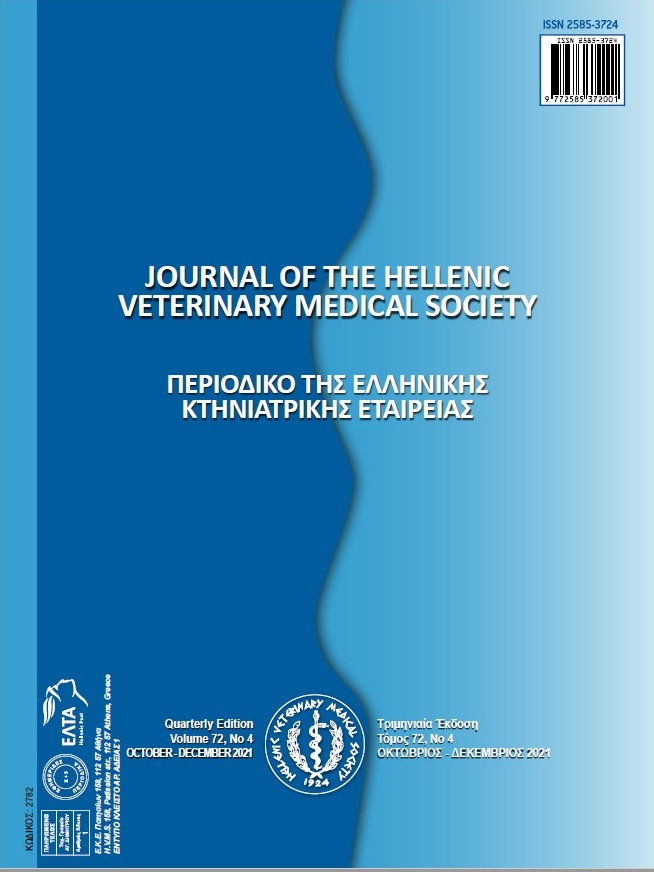A Case Report of Echinococcus granulosus sensu stricto (G1) in a Domestic Cat in Turkey

Abstract
Echinococcus granulosus sensu lato is a zoonotic helminth with a life cycle that include of definitive hosts (dogs and wild carnivores) and intermediate hosts (usually the even-toed ungulates, Artiodactyla). Intermediate hosts become infected by ingesting the parasite eggs in contaminated food and water. Accidental intermediate hosts acquire infection in a similar way as other intermediate hosts. A two-year-old female cat was presented to the Van (Turkey) Animal Care and Rehabilitation Center with abdominal tension. Multiple intraperitoneal vesicles, which were found to be E. granulosus (s.1.) metacestodes, were observed during the ultrasound imaging. Then, the animal was laparotomized. Phylogenetic analysis based the partial cytochrome c oxidase 1 (pcox1) mitochondrial gene region was performed on metacestode samples (hydatid cysts). The isolate was identified as sensu stricto genotype G1, which is most commonly found in Turkey.
Article Details
- How to Cite
-
OGUZ, B., SELCIN, O., DEGER, M., BICEK, K., & OZDAL, N. (2022). A Case Report of Echinococcus granulosus sensu stricto (G1) in a Domestic Cat in Turkey. Journal of the Hellenic Veterinary Medical Society, 72(4), 3537–3542. https://doi.org/10.12681/jhvms.29408
- Issue
- Vol. 72 No. 4 (2021)
- Section
- Case Report

This work is licensed under a Creative Commons Attribution-NonCommercial 4.0 International License.
Authors who publish with this journal agree to the following terms:
· Authors retain copyright and grant the journal right of first publication with the work simultaneously licensed under a Creative Commons Attribution Non-Commercial License that allows others to share the work with an acknowledgement of the work's authorship and initial publication in this journal.
· Authors are able to enter into separate, additional contractual arrangements for the non-exclusive distribution of the journal's published version of the work (e.g. post it to an institutional repository or publish it in a book), with an acknowledgement of its initial publication in this journal.
· Authors are permitted and encouraged to post their work online (preferably in institutional repositories or on their website) prior to and during the submission process, as it can lead to productive exchanges, as well as earlier and greater citation of published work.


